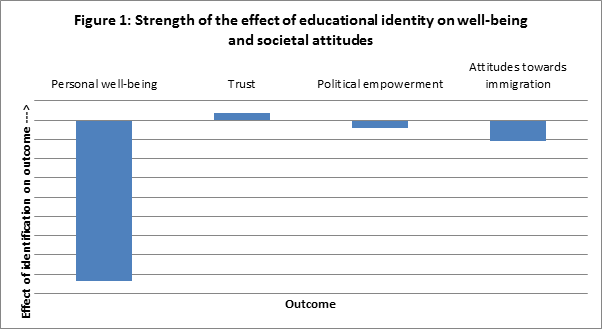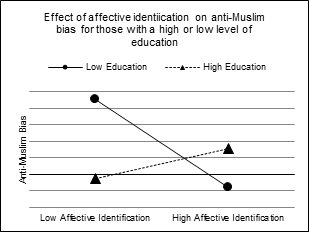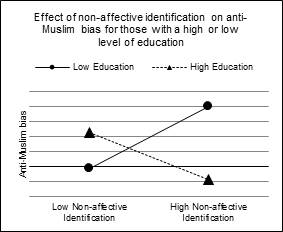As we outlined in Strand Two, our analyses on the Understanding Society (US) and Citizenship Surveys (CS) suggest that people’s well-being and societal attitudes improves to the extent that they form a social identity around their level of education. However, we conducted similar analyses using the British Household Panel Survey (BHPS), British Social Attitudes (BSA), and International Social Survey Programme (ISSP), which showed rather different results. These analyses suggested that that people who incorporate their level of education into their identities actually suffer from decreased well-being and societal attitudes (Figure 1). This was in direct contrast to the effects we found in Strand Two.

The questions that were used to measure educational identity in the BHPS, BSA, and ISSP were quite different from those that were used in the US and CS, so we conducted a small-scale study ourselves (also in collaboration with Russell Spears) to gain a better understanding of the influence of these different wordings in an attempt to understand the contradictory nature of our findings.
Our study revealed that the type of question used in the BHPS, BSA, and ISSP was tapping into a different facet of identification than the questions used in the US and CS, and these had very different effects of well-being and our measure of societal attitudes. For affective identification, we found similar results that to those in Strand Two, that educational identity was beneficial and reduced anti-Muslim bias. For non-affective Identification, however, we found the opposite results, suggesting that educational identity was actually detrimental and increased anti-Muslim bias (Figure 2).
Figure 2:


These results suggest that educational identity is a complex and multi-faceted construct that cannot be measured using single items. Specific components of identification seem to buffer against the negative consequences associated with having low levels of education, whereas other components actually seem to increase these negative consequences.
Our results suggest that identifying with a stigmatised group may not simply buffer against the associated negative effects, as some previous researchers have suggested. In fact, under some circumstances, it may actually be detrimental to members’ well-being. We hope that, by deepening our understanding of how identification can influence well-being and social attitudes, our research will be able to inform the content of future surveys as well as the designs of interventions aimed at benefiting members of stigmatised groups, especially those with lower levels of education.

